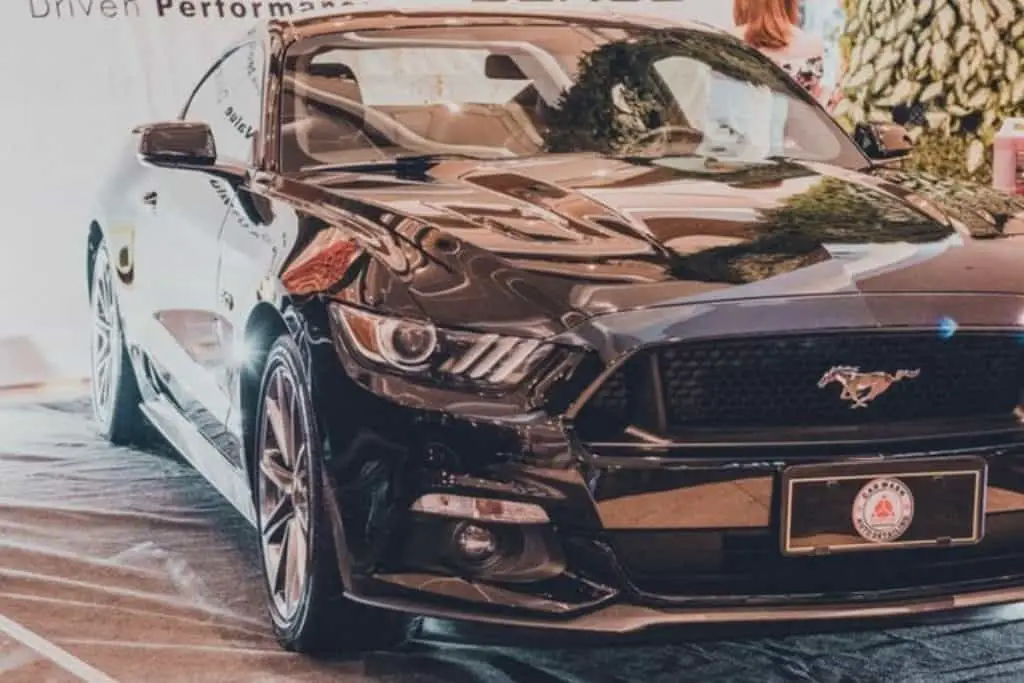- How to Clean Car Carpets Quickly (Without An Extractor) - July 10, 2024
- Can You Touch Up Clear Coat On A Car? Yes and No (Here’s Why) - November 25, 2023
- How To Wax A Car By Hand (For Beginners) - November 14, 2023
Last Updated on January 21, 2025 by Nate Schnell
Paint protection film (PPF), also known as a clear bra, has become a popular choice among car owners looking to protect their vehicle’s paint from damage. This thin, polyurethane-based film provides a protective barrier against road debris, scratches, and other environmental hazards. While it offers excellent protection, PPF has its pros and cons that you should consider before installation.
What Is Paint Protection Film?
Paint protection film is a transparent, durable layer applied to a vehicle’s painted surfaces to shield them from damage. It is often installed in high-impact areas like the front bumper, hood, and rocker panels to prevent rock chips, scratches, and stains. PPF is particularly popular among new car owners who want to preserve their vehicle’s factory finish for as long as possible.
Advantages of Paint Protection Film
PPF offers several benefits that make it a compelling option for vehicle owners who prioritize paint protection.
Superior Protection
PPF provides a robust shield against road debris, stone chips, and other environmental hazards. Its durability ensures that your car’s paint remains intact even in challenging conditions.
Self-Healing Properties
High-quality paint protection films have self-healing properties, allowing them to absorb minor scratches and dings. When exposed to heat, the film can repair itself, maintaining a smooth and glossy surface.
Stain Resistance
PPF resists stains from contaminants like bird droppings, bug splatter, and tree sap. These substances can damage unprotected paint, but PPF makes cleanup simple with soap and water.
UV Protection
The film offers excellent UV protection, preventing sun damage and fading. This helps maintain the vibrancy of your car’s paint over time.
Enhanced Finish
PPF enhances your car’s appearance by providing a glossy or matte finish, depending on your preference. It also preserves the original factory paint, which can boost resale value.
Disadvantages of Paint Protection Film
While PPF has many benefits, it’s essential to be aware of its drawbacks to make an informed decision.
Cost
PPF installation can be expensive, especially for larger vehicles or whole-body applications. The cost depends on the film’s quality and the professional installer’s experience.
Poor Installation Risks
If the film is installed incorrectly, it can lead to visible bubbles, wrinkles, or uneven application. These imperfections detract from the car’s appearance and may require reinstallation.
Maintenance Requirements
Although PPF is resistant to many contaminants, it still requires regular cleaning with mild soap and water. Harsh chemicals can damage the film, and neglect can lead to discoloration or deterioration.
Limited Durability Over Time
PPF has a finite lifespan and may need to be replaced after a few years due to wear and tear. Prolonged UV exposure and high temperatures can accelerate its degradation.
Not a Substitute for All Protections
While PPF offers superior protection against minor scratches and chips, it is not effective against larger debris or severe impacts. Regular waxing and touch-ups are still necessary for comprehensive maintenance.
Alternatives to Paint Protection Film
If PPF is not the right fit for your needs, there are other options to consider for protecting your vehicle’s paint.
Ceramic Coatings
Ceramic coatings provide a hard, transparent layer that protects against UV damage, minor scratches, and water spots. However, they do not offer the same level of impact resistance as PPF.
Vinyl Wraps
Vinyl wraps can change the color or finish of your car while providing some protection. However, they lack the durability and self-healing properties of PPF.
Wax and Paint Sealants
Traditional carnauba wax and paint sealants offer a protective layer that enhances shine and provides limited protection against contaminants. While cost-effective, they require frequent reapplication.
Is Paint Protection Film Worth It?
Paint protection film is a worthwhile investment for vehicle owners who want to preserve their car’s appearance and value. It is particularly beneficial for those who drive frequently on highways, live in areas with harsh climates, or park their cars outdoors. The added protection against road debris, scratches, and environmental damage makes it an attractive option for maintaining a vehicle’s factory finish.
Tips for Choosing and Maintaining Paint Protection Film
To get the most out of your PPF, it’s essential to choose a high-quality product and have it installed by an experienced professional. A skilled installer will ensure the film adheres smoothly without bubbles or imperfections. Once installed, clean the film regularly with mild soap and water to prevent stains and maintain its clarity. Avoid abrasive cleaners or harsh chemicals that could damage the protective layer.
Final Thoughts
Paint protection film offers excellent protection against common paint hazards, extending the life and appearance of your car’s finish. While it comes with a higher upfront cost and requires proper maintenance, its advantages often outweigh the drawbacks for vehicle owners who prioritize long-term preservation. Evaluate your needs, consider alternatives, and consult a trusted installer to make the best choice for your vehicle.



